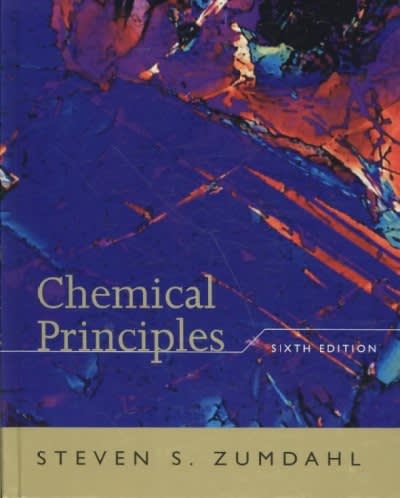Le Chteliers principle is stated as If a gaseous reactant or product is added to a system
Question:
Le Châtelier's principle is stated as "If a gaseous reactant or product is added to a system at equilibrium, the system will shift away from the added component." The system \(\mathrm{N}_{2}(g)+3 \mathrm{H}_{2}(g) ightleftharpoons 2 \mathrm{NH}_{3}(g)\) is used as an example in which the addition of nitrogen gas at equilibrium results in a decrease in \(\mathrm{H}_{2}\) concentration and an increase in \(\mathrm{NH}_{3}\) concentration as equilibrium is reestablished. In this experiment the volume is assumed to be constant. On the other hand, if \(\mathrm{N}_{2}\) is added to the reaction system in a container with a piston so that the pressure can be held constant, the concentration of \(\mathrm{NH}_{3}\) could actually decrease and the concentration of \(\mathrm{H}_{2}\) would increase as equilibrium is reestablished. Explain how this is possible. Also, if you consider this same system at equilibrium, the addition of an inert gas, at constant pressure, does affect the equilibrium position. How is the equilibrium position affected? Explain.
Step by Step Answer:






